Key Takeaways
— Gliding cupping therapy requires flexible cups along with massage oils, lotions, towels, and basic cleaning supplies.
— Common treatment areas for gliding cupping include the back, shoulders, legs, arms, neck, and sometimes the face.
— Gliding cupping supports muscle recovery, promotes lymphatic drainage, eases stress, and may offer cosmetic benefits like improved skin tone.
Cupping therapy has become a visible part of recovery routines for many, as you’ve probably seen the signature circular marks on the backs of swimmers, gymnasts, or other athletes proudly shared on social media. From physical therapy clinics to holistic wellness centers, cupping has earned a place in the broader conversation around body care and pain relief.
But, while stationary cupping is the most recognizable, there are other styles that offer different effects and sensations. One of the most adaptable and widely used is gliding cupping massage, which many clients find therapeutic and deeply relaxing.
What Is Gliding Cupping Massage?
Gliding cupping massage is a modern variation of traditional cupping therapy that combines gentle suction with continuous movement across the skin. This technique evolved from the ancient practices of Traditional Chinese Medicine (TCM), where cupping has been used for thousands of years to balance energy and treat a wide range of conditions.
While traditional cupping often involves strong suction created by heat and leaves cups in one place for several minutes, modern adaptations like the gliding type of cupping use a more massage-friendly approach. By combining elements of therapeutic massage with the principles of negative pressure, gliding cupping has found a place in both spa and clinical settings.
How Gliding Cupping Massage Works
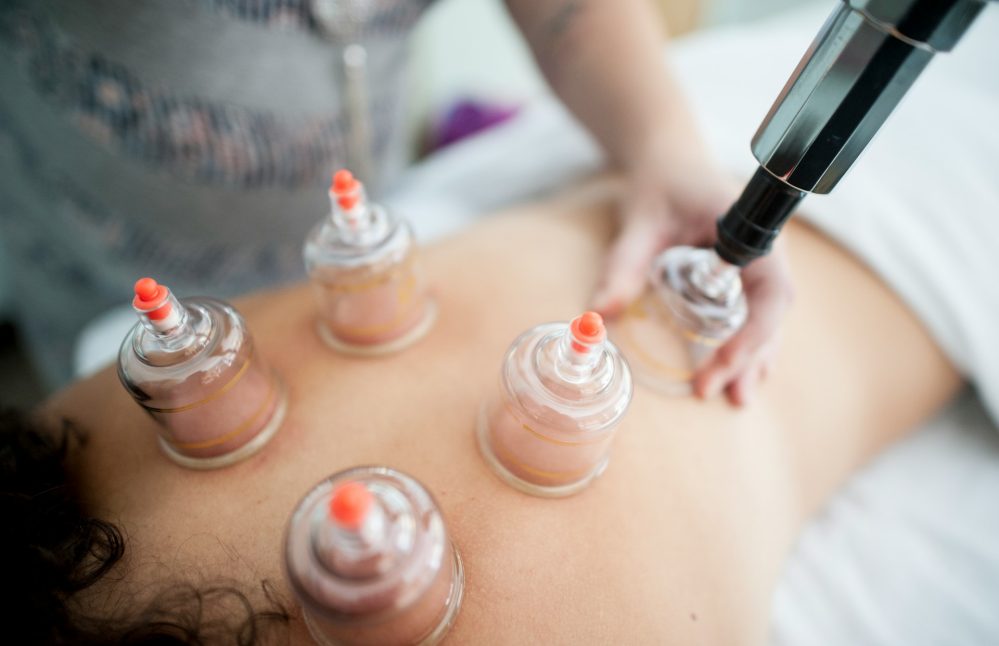
Gliding cupping works by using negative pressure to gently lift the skin and underlying tissue—essentially acting as a “reverse massage,” using pulling instead of pushing.
To create this effect, the massage therapist uses flexible cups that form a vacuum when squeezed or pumped to remove air. This gentle suction draws the skin, connective tissue, and muscle layers slightly upward, helping to release areas that feel tight or stagnant.
Before beginning, the therapist applies a light layer of oil, cream, or lotion to the skin, which allows the cup to glide smoothly across the body. As it moves along the treatment area, the cup stretches the fascia, stimulates the surface of the skin, and helps mobilize deeper tissues in a continuous, flowing motion.
Equipment needed
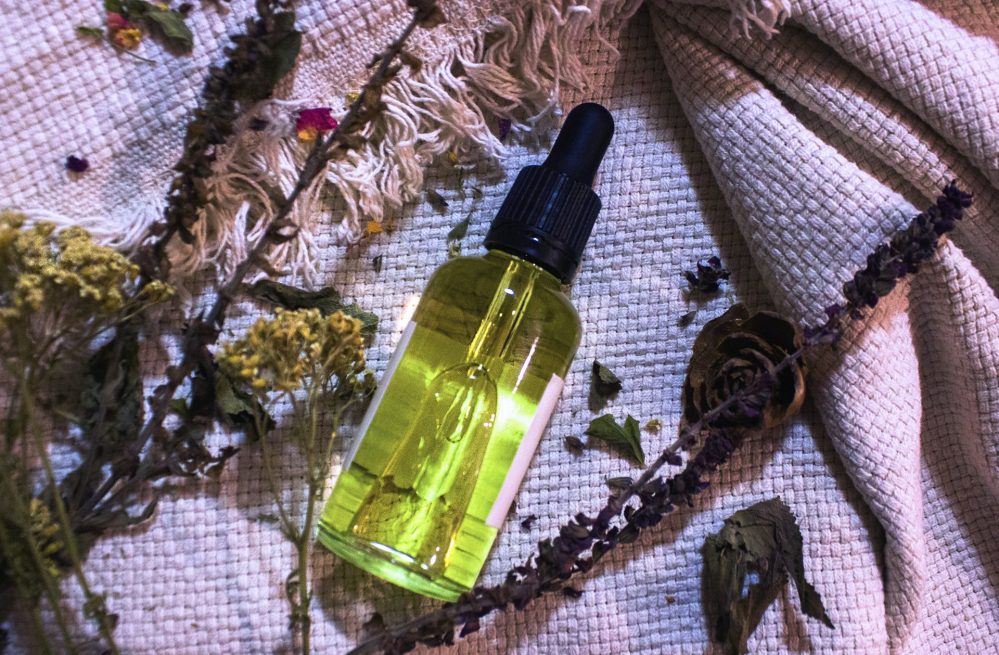
To perform a gliding cupping massage, practitioners typically select a combination of tools from the list below depending on the client’s needs and the area being treated:
— Silicone or plastic cups of different sizes
— Polycarbonate cups with manual pumps
— Glass cups with rubber pump attachment
— Massage oils
— Massage lotion
— Disinfecting wipes
— Skin-safe cleaning solution
— Disposable gloves
— Towels and linens
Areas commonly treated

Gliding cupping massage can be applied to a wide range of areas across the body, depending on each person’s needs. Larger regions like the back, shoulders, neck, and thighs are frequently chosen due to how accessible they are and how much soft tissue they offer for the cups to work over.
Therapists may also glide cups along the calves, arms, or forearms, especially when addressing repetitive use or general fatigue. Even smaller or more delicate areas, like the sides of the neck, upper chest, or jawline, can be cupped with care using appropriately sized tools.
Some practitioners also perform facial massage using miniature cups, gently moving them along the contours of the face, including the cheeks, forehead, and jaw.
While not every area of the body is suitable for cupping, the technique is surprisingly adaptable. Skilled therapists are trained to avoid bony landmarks and extra-sensitive zones while focusing on muscle groups, connective tissue, and areas with limited mobility or noticeable tightness.
Key Benefits of Gliding Cupping Massage
Gliding cupping massage offers a variety of benefits that coincide with those of therapeutic massage and classical cupping therapy. Combining suction with movement provides advantages for muscle recovery, circulation, stress relief, and even cosmetic improvements.
Myofascial release and muscle recovery
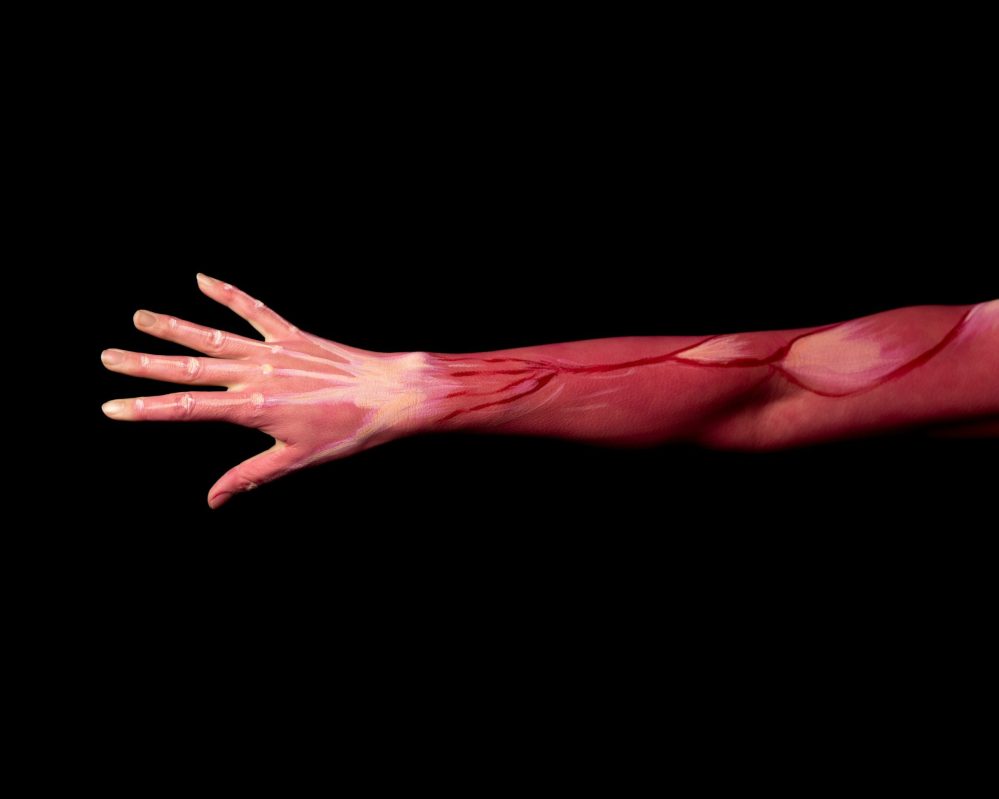
One of the standout benefits of gliding cupping is its ability to perform a type of myofascial release. The term myofascial refers to muscles (myo-) and the fascia (the connective tissue web) that surrounds them. In injuries or chronic tension, fascia can become restrictive or “sticky,” contributing to stiffness and pain.
Gliding cupping helps by lifting and separating these fascial layers, which reduces adhesions and allows muscles to move more freely. Picture a tight knot in your shoulder – the suction cup rolling over it can pull apart the tightened fascia, much like stretching saran wrap that was bunched up. This leads to improved flexibility and range of motion.
In fact, studies have observed improved elongation and increased motion of taut muscles after cupping therapy. For anyone recovering from workouts or injuries, this means faster muscle recovery and less post-exercise soreness.
Lymphatic drainage and circulation boost
Another major benefit of gliding cupping massage is the way it ramps up the circulation of both blood and lymphatic fluid. The gentle suction pulls more blood into the target area, flooding tight or injured tissues with a fresh supply of oxygen and nutrients. Increased blood flow can speed healing, reduce inflammation, and even alleviate stubborn issues like chronic swelling.
Along with blood, the lymphatic system gets a boost, too. As the cups glide, they stimulate lymph vessels under the skin to open up and drain. This lymphatic drainage helps flush out toxins and metabolic wastes that have accumulated in muscles.
Stress relief and nervous system relaxation
While cupping is often discussed in terms of physical benefits, gliding cupping massage also provides profound relaxation and stress relief. The combination of slow, repetitive gliding motions and the novel sensation of suction tends to lull the body into a state of calm.
Physiologically, as the cups move across your skin, your parasympathetic nervous system (the branch responsible for relaxation) is stimulated. You might notice your breathing deepens and your mind quiets during a session. Some people even fall asleep on the table!
Gliding cupping is akin to the deep relaxation one experiences with a good Swedish massage or a session of meditation. Many clients seek out cupping massage not just for pain relief but as a way to decompress mentally. Reducing physical tension indirectly eases mental tension, too.
After a treatment, it’s common to feel both energized and tranquil, as if you’ve hit a “reset” button on stress. This nervous system relaxation can have ripple effects: improved sleep quality, reduced anxiety levels, and even better digestion.
Potential cosmetic applications
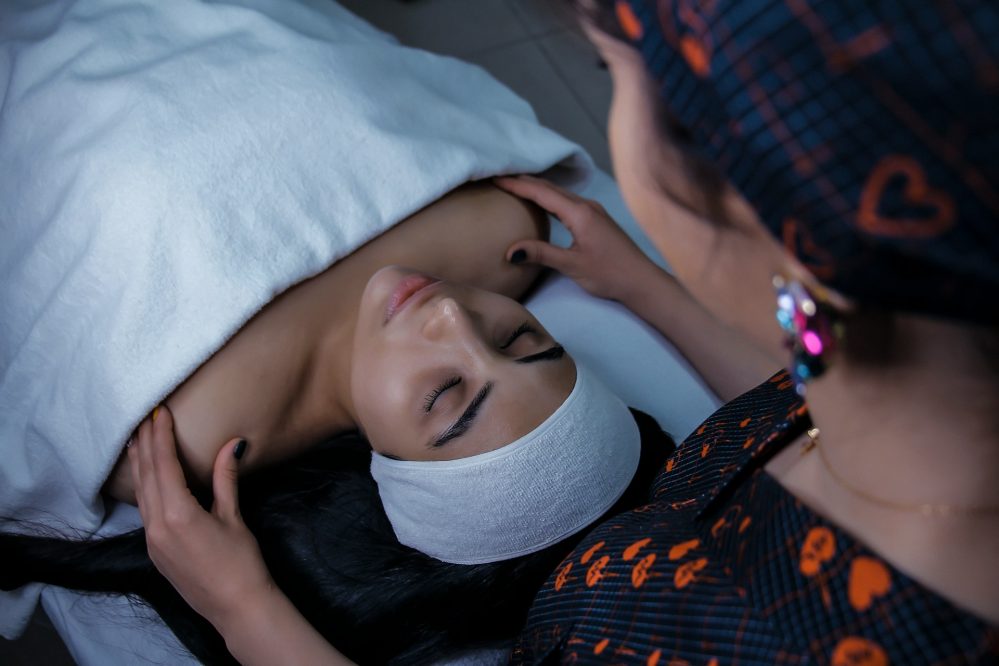
In recent years, facial cupping has become a trendy spa treatment. Using very small, soft suction cups, estheticians glide them over the face and neck to rejuvenate the skin. The increased circulation gives an immediate glow as blood rushes to the skin’s surface to nourish it.
By boosting microcirculation, facial gliding cupping can help reduce puffiness and drain excess fluid, leading to a more sculpted look. While results are not as dramatic as clinical procedures, regularly cupping the face or other areas may contribute to firmer, healthier-looking skin.
Gliding cupping is also sometimes used on areas of the body for aesthetic reasons. For instance, some spas offer cupping for cellulite reduction on thighs or buttocks. The idea is that the suction and movement help break up fascia adhesions and increase blood flow in cellulite-prone areas, which can temporarily smooth the skin’s appearance.
Best Practices for Gliding Cupping
Whether you’re a client about to receive a gliding cupping massage or a therapist performing one, following certain practices is what will guarantee a safe and effective session.
Before the session
Preparing properly helps ensure the massage is as comfortable and effective as possible. Clients should aim to:
— Arrive well-hydrated and avoid heavy meals or alcohol in the hours beforehand.
— Wear or bring loose-fitting clothing to avoid skin compression post-session.
— Inform the therapist of any medical conditions, injuries, or skin sensitivities.
— Fill out an intake form and ask any questions about the process or potential contraindications.
— If possible, apply gentle heat (via a shower or compress) beforehand to relax the tissue.
During the session
The key to a successful gliding cupping session is communication and relaxation. Clients are encouraged to:
— Relax and breathe naturally while providing feedback on suction pressure or discomfort.
— Speak up if any area feels too intense, overly sensitive, or needs additional attention.
— Stay still to allow smooth gliding
— Observe how different areas respond—some may feel tender while others feel soothing or warm.
After the session
Post-session care (for all types of massage therapy) helps support the body’s recovery and enhances benefits. Clients should:
— Expect some redness or minor marks that fade within a few hours to days.
— Drink plenty of water to assist with lymphatic flushing and metabolic clearance.
— Avoid intense physical activity for the remainder of the day; opt for rest or light movement.
— Keep treated areas warm and protected from cold or wind.
— Skip saunas or hot baths for 24 hours, as excessive heat may worsen redness.
— Monitor for lingering soreness and follow up with the therapist if needed.
Tips for massage therapists
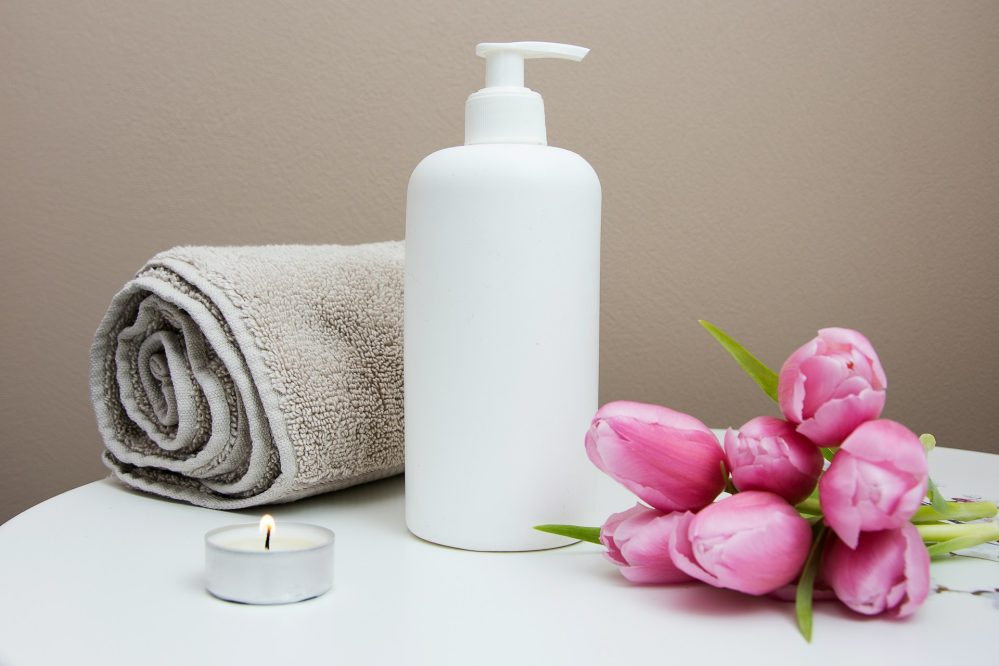
Practitioners offering gliding cupping must prioritize client safety, comfort, and technique. To do so, they should:
— Always take a complete health history and screen for contraindications prior to treatment.
— Begin sessions with lighter suction and shorter durations, especially for new clients.
— Keep cups in continuous motion to prevent bruising or overstimulation of one area.
— Use an appropriate amount of oil—enough for gliding, not so much that the cup slips.
— Observe skin responses throughout the session and adjust the technique accordingly.
— Check in with clients regularly to ensure they are comfortable and informed.
— Educate clients on what to expect post-session and provide clear aftercare instructions.
— Sanitize all equipment thoroughly after each use and avoid applying cups over compromised skin.
Side Effects and Contraindications
Gliding cupping massage is generally considered quite safe when practiced by a trained professional, especially since it uses gentler pressure than some traditional cupping methods. However, like any therapeutic technique, it does come with some potential side effects and isn’t suitable for everyone in every situation.
Generally, side effects tend to be harmless and temporary, but clients should still be aware of the following:
— Temporary redness or circular marks
— Mild muscle soreness or tenderness in treated areas
— Slight skin sensitivity or irritation
— Light bruising, particularly in individuals with fair or sensitive skin
Gliding cupping also should be avoided or only performed under medical guidance in the following cases:
— Open wounds, active rashes, sunburn, or any broken or inflamed skin
— Ongoing infections or skin conditions such as eczema, psoriasis, or dermatitis
— Diagnosed blood clotting disorders, including hemophilia, or the use of anticoagulant medications
— Pregnancy, particularly in the abdominal, lower back, or inner thigh regions without medical approval
— History of cancer, varicose veins, or recent surgery unless cleared by a healthcare provider
— Severe cardiovascular conditions or uncontrolled chronic illnesses affecting circulation or healing
The Bottom Line
Gliding cupping massage is a shining example of how ancient healing practices can evolve to fit modern needs. It takes the core idea of cupping—using suction to promote circulation and relief—and adds a new twist by getting that cup moving. The result is a therapy that can feel as relaxing as a massage yet work as deeply as traditional cupping.
As with any therapeutic modality, the best results come when it’s performed by a knowledgeable practitioner. Therefore, if you’re interested in becoming a licensed massage therapist, join our Medical Massage Therapy program and gain hands-on skills to help others glide toward better health.
Frequently Asked Questions (FAQs)
Does gliding cupping leave marks like traditional cupping?
Gliding cupping may leave mild redness or light circular marks, but they’re typically less pronounced than those from stationary cupping and fade quickly.
Can I do a gliding cupping massage at home safely?
Yes, with proper training and high-quality equipment, gliding cupping can be done at home. However, it’s best to consult a licensed therapist first to avoid improper technique or injury.
Is gliding cupping painful?
No, it shouldn’t be painful. Most people describe the sensation as a deep pulling or stretching, and discomfort usually means the suction is too strong or the technique needs adjustment.
How soon do the results show?
Many people feel relief and increased mobility immediately after a session, while others notice a gradual improvement over the next day or two as circulation and muscle recovery continue.